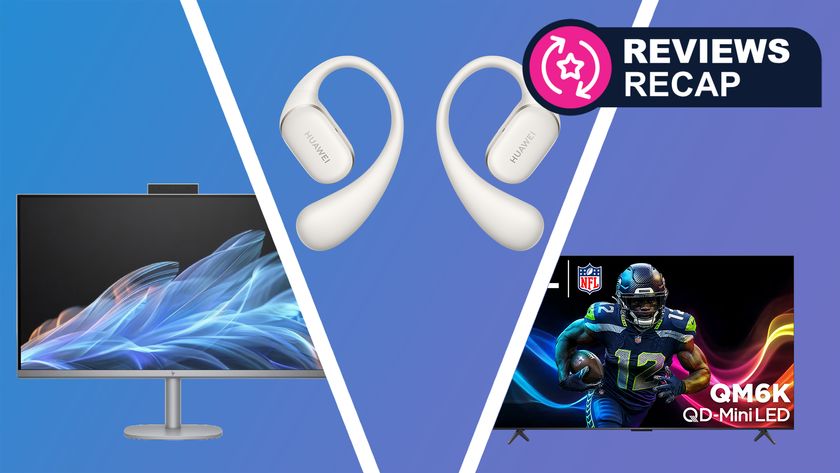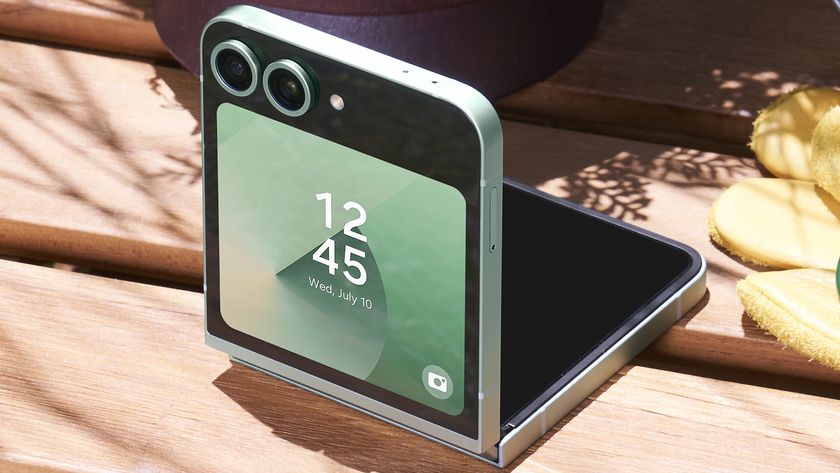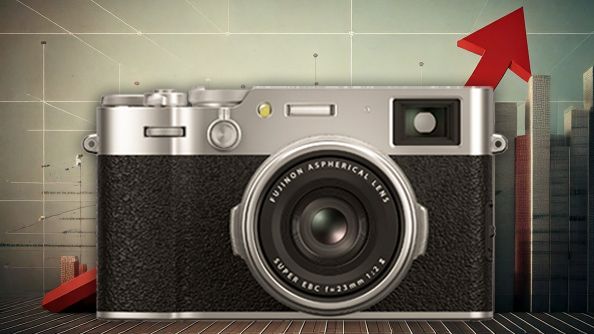LA Noire is VR’s first blockbuster, now the tech just needs to catch up
A sense of presence only Rockstar can achieve
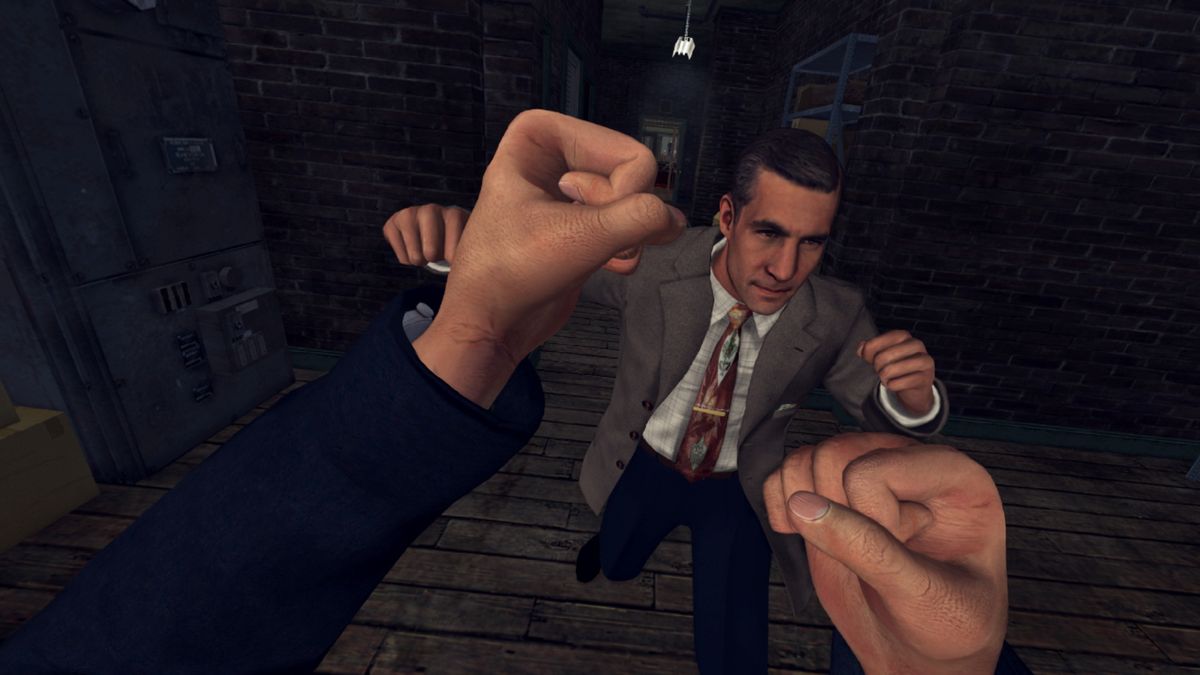
I’m standing in a shoe store interrogating my first witness. She’s clearly nervous, her eyes are darting everywhere in the room aside from meeting my gaze, and her shoulders are turned inwards.
The experience transports me back six years, back to the first time I played through LA Noire’s, but this time something huge is different. It's game-changing.
My suspect has finished her answer, but I’m not buying it. I pull the ‘Bad Cop’ routine, and the slight pressure causes her to crack, returning the additional piece of information the case requires.
Fundamentally, this gameplay loop of asking questions and reading responses will be familiar to anyone who played the original game over half a decade ago. This time though, rather than pressing a button to inspect my notepad and pick my next line of questioning, I use one of the HTC Vive virtual reality headset's motion controllers to bring up my detective’s notebook, and I use the other to tap my pen on the next option.
The interview continues in earnest. My suspect, a clerk at the store, is initially unwilling to divulge any information, but quickly warms up as I call her out on each one of her falsehoods. Pretty soon I have all the information I need, and the interrogation concludes.
The city's still the star
I step out of the store and onto the streets of Los Angeles, where Rockstar’s city has been given a new lease of life by virtual reality. This is LA Noire: The VR Case Files, a remake of nine missions from the original game, this time produced for the HTC Vive. I had the opportunity to try out a couple of missions in VR during a trip to Rockstar's London offices.
While many other VR games have focussed on trying to cram the frantic action of modern games into the new medium, Rockstar has turned to one of its more slower-paced game for its VR debut. It’s a bet that appears to have paid off magnificently.
Get daily insight, inspiration and deals in your inbox
Sign up for breaking news, reviews, opinion, top tech deals, and more.
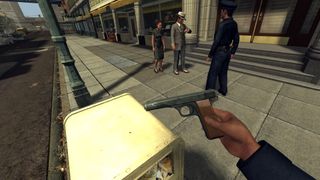
The Grand Theft Auto games have always revolved around their car chases and shoot-outs but LA Noire’s greatest moments were often its smallest. The game reveled in details like the small, nervous flicks of a suspect’s eyes, or the hidden piece of evidence that provide the crucial clue that all is not quite as it seems.
But in this moment as I stand on the sidewalk it’s the atmosphere of Los Angeles that stands centre stage. Rockstar has always had a unique knack for finding the soul of its cities, and the more historical setting of LA Noire has always made it more special to me.
Like all its games, Rockstar still veers towards viewing the world through the lens of pop culture rather than history, but the real-life inspiration for many of the cases gives this world in particular an edge that’s more The Wire than The Godfather.
Stripped down, full fat
When Rockstar first announced The VR Case Files it was joined by the slightly disappointing news that the game would not be a complete remake of the original. Instead of the 2011 version’s 20+ cases, the VR release has seven, and instead of placing them in a vast open-world that’s always teeming with side missions, the game keeps you focussed on single missions.
When the announcement was first made I mused that these cuts must have been made to keep the experience focussed on the game’s slower-paced, and hence more VR-friendly, but I was completely wrong.
The VR Case Files even, as I soon find out, allow you to drive around the city. Before I do so however, I have to get to the car, which allowed me to try out the game’s three movement options.
Movement in VR continues to be that nut that every developer is desperate to crack. Let people move around as they would in an ordinary game and the disconnect between what your eyes are seeing (ie movement), and what your brain is feeling (ie nothing of the sort) breaks the immersion and can even create motion sickness.
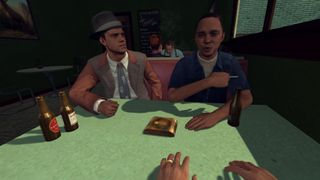
It’s become commonplace now for VR games to employ some sort of teleportation mechanic. It allows you to nip around levels as quickly as you like, and once you get used to it the whole process feels completely natural.
LA Noire splits the difference between these two control schemes. You can either hold the trackpad on the left Vive controller and swing your arms to move forward manually, or else you can double tap it and point at the environment to teleport.
During my time with the game I opted for the latter, and in a short half second I end up behind the wheel of our period-appropriate car. I turn the key in the ignition, and place my virtual hands on the wheel, using their triggers to accelerate and brake. It’s no Project Cars, but the freedom is impressive. I’m told that I can take any route I like to get to the next investigation location, but there’s unfortunately little reason to do so aside from sightseeing (the game has stripped out the incidental world events of the original).
Fighting dirty
In a few short moments we’re interrogating the owner of the gun found at the scene of the crime, who promptly proves his guilt by making a dash for it out of the back of the shop. It’s here that the second aspect of the game that I thought would have been stripped out makes an appearance - the chases and fist-fights.
Thanks to my use of teleportation rather than running, the chase itself is fairly uneventful, but it’s when I catch up to the suspect that things get interesting with a fist-fight.
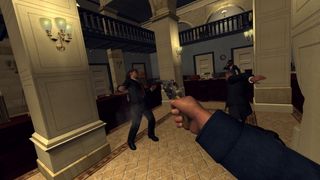
The controls here feel natural and result in a Punch-Out-esque minigame of learning your opponent’s tells, blocking or ducking, and responding in kind. Holding the controller’s triggers balls your hands into a fist, but I was more fond of fighting with open-palms, which allowed me to repeatedly slap my opponent into submission.
It was a fun diversion, but there was a part of me that wished I was still back at the scene of the crime searching for clues and interviewing witnesses, because it was here the VR experience really shone.
Outstripping the hardware it runs on
Gaming can struggle with subtlety. Every year, a new slate of releases tries to top the action of previous years with more explosions, more guns, and more outrageous scenarios.
But VR resets this need for intensity. Here, the most enjoyable experience of all can be just existing in a new location, especially when it’s a world that’s realised with as much care and attention as Rockstar put into theirs.
The biggest downside of this experience is that current generation VR hardware doesn’t feel equipped to handle this level of detail. Details in shop-fronts can get lost in the relatively low resolution of the Vive’s headset, along with subtleties in actor’s MotionScanned performances (which still hold up after all these years).
Similarly, while the detectives notepad is a fantastic solution to the problem of needing to make menu choices mid-game, but it can appear blurry unless you hold it up to your face.
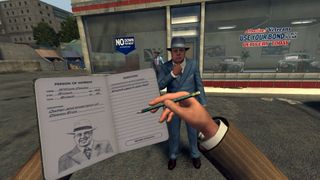
What Rockstar has on its hands is the perfect example of how to do a big-budget game in VR. Rather than focus on upping the intensity of the action, it chooses to double down on the presence enabled by the medium. Only this publisher is capable of delivering that level of detail and sense of atmosphere.
The only shame is that it’s made such strides that the hardware sometimes fails to keep up. The bar has been set for what subtle experiences VR is capable of. Now manufacturers just need to work out how to allow future headsets to let them deliver on this vision.
LA Noire: The VR Case Files will be launching in December for the HTC Vive.
Jon Porter is the ex-Home Technology Writer for TechRadar. He has also previously written for Practical Photoshop, Trusted Reviews, Inside Higher Ed, Al Bawaba, Gizmodo UK, Genetic Literacy Project, Via Satellite, Real Homes and Plant Services Magazine, and you can now find him writing for The Verge.


